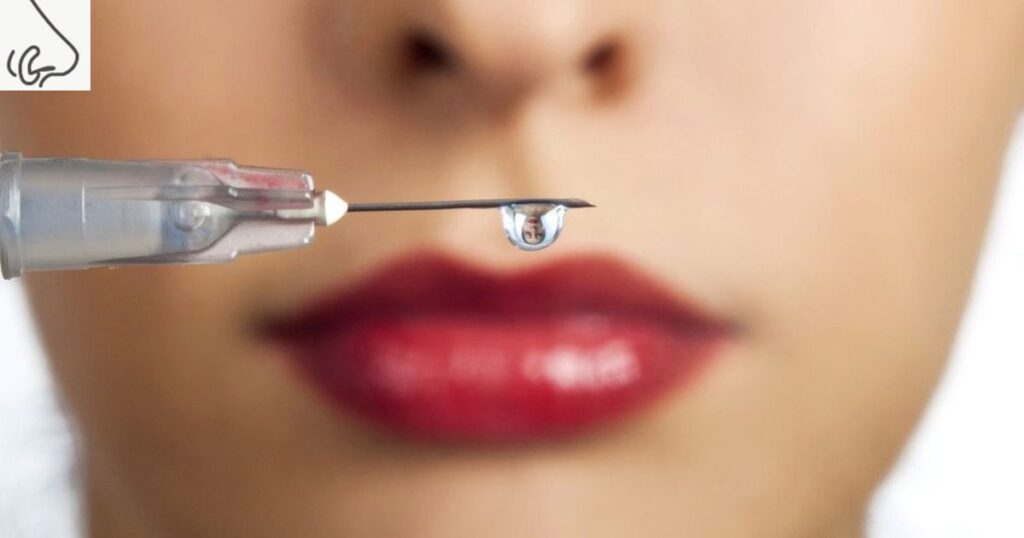Getting a nose piercing can be an exciting and stylish form of self-expression. However, it’s no secret that the thought of the needle can make even the bravest individuals a bit anxious. The good news is that there are methods available to help numb your nose before piercing, making the process more comfortable. In this comprehensive guide, we’ll explore various techniques to ensure a less painful and smoother nose piercing experience.
Table of Contents
- Why Consider Numbing Your Nose for Piercing
- Understanding the pain involved
- Advantages of pre-piercing numbing
- Common numbing methods
- Over-the-Counter Numbing Creams and Gels
- Topical anesthetics
- How to apply numbing creams
- Effectiveness and duration
- Ice: A Natural Numbing Agent
- How ice works to numb the area
- Proper icing techniques
- Combining ice with other methods
- Local Anesthetic Injections
- What is a local anesthetic?
- The role of a professional piercer
- Potential risks and side effects
- Oral Pain Relievers: The Pill Approach
- Pain relievers and their effects
- The timing of pain relievers
- Common options
- Homemade Numbing Solutions
- Natural ingredients that provide numbing effects
- Making your own numbing solution
- Safety precautions
- Psychological Techniques for Pain Management
- Mind over matter: the power of distraction
- Breathing and relaxation exercises
- Seeking support from friends or professionals
- Before Your Piercing Appointment
- Consultation with a professional piercer
- Preparing the numbing method
- Addressing allergies and medical conditions
- During the Piercing Procedure
- What to expect
- Communication with the piercer
- Staying calm and relaxed
- Aftercare and Pain Management
- Healing process of a nose piercing
- Pain management techniques post-piercing
- Recognizing signs of infection or complications
- Conclusion
- The choice to numb or not to numb
- The importance of a skilled and experienced piercer
- Embarking on a journey of self-expression
1. Why Consider Numbing Your Nose for Piercing
Understanding the Pain Involved
A nose piercing involves puncturing the cartilage or soft tissue in your nostril or septum. When considering whether to re-pierce your nose in the same hole, you should take into account that this procedure can cause some level of pain. However, the degree of pain experienced can vary greatly from person to person, and several factors influence the level of pain, such as individual pain tolerance, location of the piercing, and the technique used by the piercer.
Advantages of Pre-Piercing Numbing
The benefits of numbing your nose before piercing are significant. They include:
- Reduced Discomfort: Numbing helps minimize the discomfort and pain associated with piercing.
- Less Anxiety: Numbing can lower anxiety levels before and during the procedure.
- Increased Relaxation: Being more relaxed contributes to an overall smoother piercing process.
- Positive Experience: A painless or minimally painful experience may encourage future piercings.
Common Numbing Methods
There are several methods to numb your nose before piercing, including:
- Over-the-Counter Numbing Creams and Gels
- Ice: A Natural Numbing Agent
- Local Anesthetic Injections
- Oral Pain Relievers: The Pill Approach
- Homemade Numbing Solutions
- Psychological Techniques for Pain Management
In the following sections, we’ll delve deeper into each of these methods, explaining their applications, effectiveness, and potential risks.
2. Over-the-Counter Numbing Creams and Gels
Topical Anesthetics
One of the most accessible and widely used methods for numbing your nose before piercing is the application of over-the-counter (OTC) numbing creams and gels. These products often contain topical anesthetics such as lidocaine or prilocaine, which work by blocking nerve signals in the area where they are applied.
How to Apply Numbing Creams
To effectively use an OTC numbing cream or gel:
- Clean the Area: Ensure your nose is free of any makeup, dirt, or oils. Cleanse it gently with mild soap and water.
- Apply the Numbing Cream: Following the product’s instructions, apply a thin layer of the numbing cream to the area where the piercing will take place. Avoid getting the cream in your eyes or mouth.
- Cover and Wait: Some products may require covering the area with plastic wrap for better absorption. Wait for the specified duration mentioned on the product’s packaging.
Effectiveness and Duration
Numbing creams and gels are generally effective and can provide relief for up to an hour or more. Their effectiveness varies from person to person, so it’s essential to follow the instructions carefully and perform a patch test before applying them to a larger area.
3. Ice: A Natural Numbing Agent
How Ice Works to Numb the Area
Ice, a natural numbing agent, can help reduce the pain and swelling associated with a nose piercing. It works by constricting blood vessels and numbing the nerves in the area. This method is cost-effective and relatively easy to use.
Proper Icing Techniques
To use ice for numbing:
- Prepare the Ice: Place crushed ice in a clean cloth or an ice pack.
- Apply to the Nose: Gently press the ice against the area to be pierced for a few minutes.
- Interval Application: Remove the ice for a minute or two, then reapply it. Continue this process for about 10-15 minutes.
Combining Ice with Other Methods
For enhanced numbing, you can combine ice with other methods like OTC numbing creams. Apply the numbing cream first, and then use ice in intervals before the piercing procedure.
4. Local Anesthetic Injections

What Is a Local Anesthetic?
Local anesthetics are substances that block nerve signals in a specific area, rendering it temporarily insensitive to pain. They are administered via injections and are commonly used by healthcare professionals and experienced piercers for numbing purposes.
The Role of a Professional Piercer
Professional piercers are skilled in administering local anesthetics and are the best individuals to perform these injections. It’s essential to consult with your piercer before the procedure to discuss the possibility of using local anesthesia.
Potential Risks and Side Effects
While local anesthetics can provide excellent numbing, they carry potential risks and side effects. These can include allergic reactions, infection at the injection site, or prolonged numbness. Therefore, it’s crucial to have a thorough discussion with your piercer and consider your medical history.
5. Oral Pain Relievers: The Pill Approach
Pain Relievers and Their Effects
Taking oral pain relievers, such as ibuprofen or acetaminophen, before your piercing appointment can help manage pain. These medications reduce pain and discomfort by blocking pain signals in the brain.
The Timing of Pain Relievers
Take the recommended dose of pain relievers approximately 30 minutes before your scheduled piercing appointment. This allows the medication to take effect and provide relief during and after the procedure.
Common Options
Common over-the-counter oral pain relievers include:
- Ibuprofen (Advil)
- Acetaminophen (Tylenol)
- Naproxen (Aleve)
Ensure you follow the recommended dosage and consult with your healthcare provider if you have any underlying medical conditions.
6. Homemade Numbing Solutions
Natural Ingredients That Provide Numbing Effects
If you prefer a more natural approach, you can create homemade numbing solutions using ingredients that provide numbing effects. Common natural options include clove oil, chamomile, and aloe vera.
Making Your Own Numbing Solution
Here’s a simple recipe for a homemade numbing solution:
Ingredients:
- 1-2 drops of clove oil
- 1-2 drops of chamomile essential oil
- Aloe vera gel
Instructions:
- Mix the clove oil and chamomile essential oil into a small amount of aloe vera gel.
- Apply the mixture to the area to be pierced.
- Allow it to sit for several minutes before wiping it off.
Safety Precautions
Homemade numbing solutions can be effective, but it’s crucial to perform a patch test to check for any adverse reactions or allergies to the ingredients. If you’re uncertain, consult with a healthcare professional before using homemade solutions.
7. Psychological Techniques for Pain Management

Mind Over Matter: The Power of Distraction
The mind plays a powerful role in managing pain. Engaging in activities or thoughts that distract you from the impending piercing can significantly reduce discomfort. You can:
- Listen to Music: Bring your favorite music and earphones to the piercing appointment.
- Deep Breathing: Practice deep and slow breathing to calm your nerves.
- Meditation and Visualization: Visualize a calming and serene place to transport your thoughts.
Breathing and Relaxation Exercises
Practicing controlled breathing and relaxation techniques can help you stay calm during the piercing. Deep breaths in and out can reduce anxiety and promote relaxation.
Seeking Support from Friends or Professionals
Having a friend or a professional piercer talk you through the process or provide emotional support can also ease anxiety and make the experience more comfortable.
8. Before Your Piercing Appointment
Consultation with a Professional Piercer
Before your piercing appointment, schedule a consultation with your chosen piercer to discuss the numbing method you plan to use. Your piercer can provide valuable insights, offer recommendations, and assess any potential allergies or medical concerns.
Preparing the Numbing Method
Follow the instructions for your chosen numbing method carefully to ensure it is ready and effective on the day of your appointment. Have any required supplies, such as numbing cream or ice, ready and accessible.
Addressing Allergies and Medical Conditions
Inform your piercer about any known allergies or medical conditions to ensure the chosen numbing method is safe for you. This is a crucial step in preventing any adverse reactions during the piercing procedure.
9. During the Piercing Procedure
What to Expect
During the piercing procedure, you can expect the following:
- Cleansing and Marking: Your piercer will cleanse the area and mark the precise location for the piercing.
- Pain or Discomfort: Depending on the chosen numbing method, you may experience minimal to no pain or just mild discomfort.
- Communication: Maintain open communication with your piercer. If you experience excessive pain or discomfort, inform them immediately.
Staying Calm and Relaxed
Utilize the psychological techniques mentioned earlier to stay calm and relaxed during the procedure. Your preparedness and the effectiveness of the chosen numbing method can significantly contribute to your comfort.
10. Aftercare and Pain Management
Healing Process of a Nose Piercing
After the piercing is complete, it’s essential to understand the healing process. A nose piercing typically takes several weeks to months to heal fully. During this time:
- Follow Aftercare Instructions: Adhere to the aftercare guidelines provided by your piercer.
- Avoid Touching: Keep your hands off the piercing to prevent infection.
- Monitor for Infection: Watch for signs of infection, such as redness, swelling, pain, or discharge.
- Consult Your Piercer: If you suspect any issues, consult your piercer for guidance and care instructions.
Pain Management Techniques Post-Piercing
Following your piercing, you may experience mild discomfort, swelling, or tenderness. Over-the-counter pain relievers can help manage these symptoms. Remember to maintain good hygiene and follow your piercer’s advice for a successful healing process.
FAQs
Why should I consider numbing my nose for piercing?
- Numbing your nose before piercing can reduce discomfort, anxiety, and lead to a more positive and relaxed piercing experience.
2. What are the advantages of pre-piercing numbing?
- Pre-piercing numbing minimizes pain, lowers anxiety, increases relaxation, and encourages future piercings.
3. What are the common methods for numbing the nose before piercing?
- Common methods include over-the-counter numbing creams and gels, using ice, local anesthetic injections, oral pain relievers, homemade numbing solutions, and psychological pain management techniques.
4. How do I properly apply over-the-counter numbing creams and gels?
- Clean the area, apply a thin layer of the numbing cream following product instructions, and wait for the specified duration, avoiding contact with eyes or mouth.
5. What should I expect during the piercing procedure, and how can I stay calm and relaxed?
- The procedure includes cleansing and marking. To stay calm, use distraction techniques like music or deep breathing, and communicate openly with your piercer to address discomfort if it arises.
11. Conclusion
The Choice to Numb or Not to Numb
The decision to numb your nose before piercing ultimately depends on your comfort level and pain tolerance. While numbing methods can help ease the process, many individuals choose to forgo them.
The Importance of a Skilled and Experienced Piercer
Regardless of your choice, having a skilled and experienced piercer is paramount to a successful nose piercing. They can guide you through the process, address your concerns, and ensure the highest level of professionalism and hygiene.
Embarking on a Journey of Self-Expression
Nose piercings are a personal and artistic form of self-expression. Whether it’s your first time or you’re adding to your collection, your piercing journey is unique and should be enjoyed with style and confidence.



















